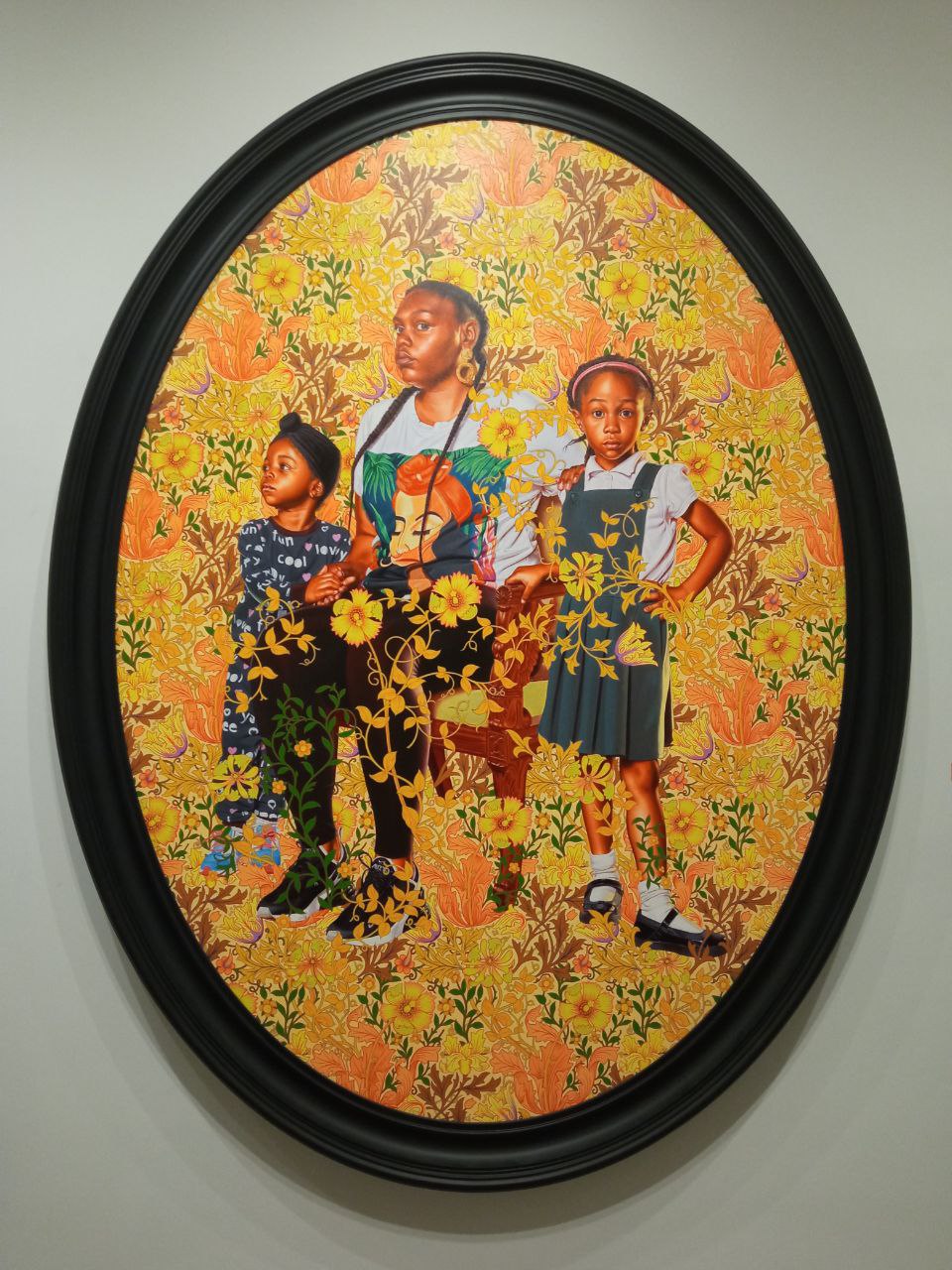Reframe
Reframe 1

 Usually mosaics are associated with more “serious” art with political or religious associations; for example, in the Soviet Union, mosaics are created for propaganda reasons that glorify the Soviet achievements and emphasize the ideology of the communist party
Usually mosaics are associated with more “serious” art with political or religious associations; for example, in the Soviet Union, mosaics are created for propaganda reasons that glorify the Soviet achievements and emphasize the ideology of the communist party

In Islamic art, mosaics are rich in symbolism and the creation of them is an expression of faith.

This mosaic piece is quite surprising at first, as if it’s an oxymoron of using a serious medium to feature a deconstructivist modern art piece. The reframe of this mosaic piece is interesting because it describes the theme of the work well. In addition, it also describes the materials used in the piece, which also have significance and are unconventional.
Reframe 2

 The existing description on this reframe connects it to Kehinde Wiley’s larger series of works under The Yellow Wallpaper project on a very surface level. We’re told that the project is referencing a famous feminist short story (of the same name), but not much more about the story itself. There’s an interesting dialogue between the short story and the painting - primarily in how Kaya Palmer and her children are juxtaposed with the [story’s] maddeningly yellow wallpaper, possibly meant to signify the weight of cultural heritage and flawed societal beliefs/expectations. Charlotte Perkins Gilman herself was both a eugenicist and a feminist, making Wiley’s interpretation of the “sickly” yellow wallpaper even more intricate and complex.
The existing description on this reframe connects it to Kehinde Wiley’s larger series of works under The Yellow Wallpaper project on a very surface level. We’re told that the project is referencing a famous feminist short story (of the same name), but not much more about the story itself. There’s an interesting dialogue between the short story and the painting - primarily in how Kaya Palmer and her children are juxtaposed with the [story’s] maddeningly yellow wallpaper, possibly meant to signify the weight of cultural heritage and flawed societal beliefs/expectations. Charlotte Perkins Gilman herself was both a eugenicist and a feminist, making Wiley’s interpretation of the “sickly” yellow wallpaper even more intricate and complex.
The New Images exhibit (of which this is a part) doesn’t offer significantly more cultural context, so it’s hard to put this together without extensive google searching. It’s a little unfortunate that all this depth is missing from the description - perhaps this is a situation where the art really does require a guided tour from the curator, but then how would an everyday visitor be able to parse the ReFrame sign? One resolution might be to include an online system for keeping more long-form descriptions of surrounding context behind the ReFrame works specifically. Ideally such a system would allow viewers to quickly get more information for the selected designs (possibly through a QR code), possibly with some additional community engagement features.
Additional Reframe
Despite the museum’s efforts in tracing the troubled history of the collected objects, there are some things that are understated. A museum can be portrayed as a passive party having a collection of objects that have a troubled past, but it can also be an active participant in the acquisition of the objects. In the case of the Harvard Art Museums, one example is the Fogg expeditions, as described in this article from 1925. (https://www.thecrimson.com/article/1925/3/20/second-fogg-museum-expedition-now-preparing/). One potentially interesting reframe can be describing the history of Harvard’s archaeological expeditions and what objects were acquired from them, as well as the associated controversies.


